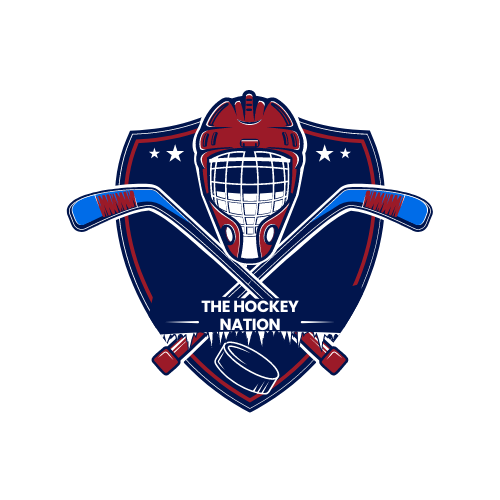When you attend a hockey game, you’ll notice a maze of lines on the ice. Among these, the lines behind the goalie net form what is known as the trapezoid.
What is the Trapezoid in Hockey?
The trapezoid is the area behind the goal line where the goaltender is permitted to play the puck. If the goalie ventures beyond this area to play the puck, they’ll face a 2-minute penalty.
Why Did the NHL Trapezoid Rule Come into Existence?
Fans adored the high-octane, goal-scoring excitement of 1980s hockey, driven by legends like Wayne Gretzky and Mario Lemieux. However, the 1990s brought league expansion, diluting the talent pool. Teams adopted the defensive neutral zone trap to stifle more skilled opponents, leading to the low-scoring “dead puck era.” To counteract this, the NHL introduced the trapezoid rule to keep the game dynamic and thrilling.
The neutral zone trap is a strategic hockey system where, instead of aggressively pushing for goals, a team hangs back and waits for the opponent to make a mistake or turn over the puck—then capitalizes on it. This philosophy led to a significant drop in scoring in the NHL, with goals per game plummeting by 30-40%. The trap era, peaking in the late 1990s and early 2000s, was notorious for its defensive style, which many fans and players found dull.
The 2004-2005 NHL lockout, which canceled an entire season, prompted the formation of a rules committee to boost offense in the league. One notable change aimed at increasing scoring was the introduction of the trapezoid behind the net.
How does the trapezoid behind the goal line increase offense?
Before the trapezoid’s implementation, NHL goalies had become masters at playing the puck outside their crease. A common offensive strategy involves shooting the puck into the corner or around the boards, allowing offensive players to outskate defenders and gain possession or check them to force a turnover. However, goalies were so adept at leaving their crease to play the puck that they could intercept these plays and pass it to their own defense, effectively shutting down the offensive team’s chances.
By restricting the area where goalies can play the puck, the trapezoid rule reinvigorated the offensive strategy. It prevented goalies from easily nullifying one of the primary ways teams gained possession in the offensive zone, thereby making the game more exciting and dynamic. The only other way a team could enter the offensive zone was by carrying the puck over the blue line themselves.
With these changes, the NHL aimed to restore the thrill and high-scoring nature of the game, making hockey more engaging for spectators and players alike.

With a low chance of retrieving the puck from a shoot-in, defensive players can “stack” the blue line, making it harder for teams to skate the puck over and enter the offensive zone. As a result, gaining possession in the offensive zone became extremely challenging.
This defensive strategy was fully deployed during the “dead puck era” of the late 1990s and early 2000s, a period marked by low-scoring games and stiff defensive play. During the 2004 lockout, players, coaches, and general managers brainstormed ways to break this stifling trap system.
Has the trapezoid rule helped to increase scoring and What is the Trapezoid in Hockey?
It’s challenging to pinpoint exactly how much the trapezoid has boosted scoring. However, the NHL’s post-2004-2005 lockout rule changes, including the trapezoid, have certainly led to an uptick in scoring. The league’s ongoing tweaks have sped up the game and dismantled the neutral zone trap, resulting in a more thrilling brand of hockey.
The NHL tested the trapezoid in the AHL before officially implementing it in the 2005-2006 season. This rule is often called “The Brodeur Rule” after Hockey Hall of Famer and two-time Stanley Cup champion Martin Brodeur. Brodeur, renowned for his puck-handling skills, played for the New Jersey Devils, a team famous for their effective neutral zone trap. During this era, the Devils excelled in low-scoring games, often winning by slim margins like 2-1, a stark contrast to the high-scoring “firewagon hockey” of the Gretzky 80s.
Are there any arguments against the Trapezoid?
Not everyone is a fan of the trapezoid. Here are some arguments against it:
- An increase in injuries to defensemen: When goalies come out to play the puck, it helps defensemen retrieve the puck before getting slammed into the boards by opponents. A 200-pound forward hitting you into the boards is no joke. Goalies handling the puck can reduce these painful hits and subsequent injuries.
- Some goalies are poor at stickhandling: Not all goalies are skilled with the puck. Isn’t it entertaining to watch a goalie who struggles with stickhandling create chaos outside the net?
- Who wants to watch dump and chase hockey: Do we really want to see more dump-and-chase scenarios? No, we crave teams carrying the puck and crafting beautiful passing plays. The trapezoid often leads to less exciting dump-and-chase hockey.
- Confusing: Hockey can be tricky for new or casual fans to grasp. Do we really need more lines on the ice to complicate things?
While I agree with some of these points, I believe the trapezoid enhances the overall flow of hockey, making it more offensive. Removing the trapezoid could help teams enforce a more effective neutral zone trap.
Conclusion
Next time you’re at a game and spot the area behind the goalie’s net, you’ll know it’s the trapezoid— the only place where the goalie can handle the puck behind the goal line.
